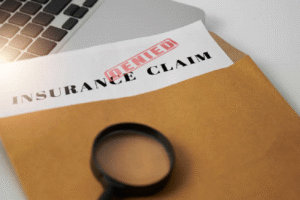Your home is likely the biggest investment you’ll ever make. It’s more than just a place to live—it’s where you build memories, raise your family, and create a sense of security. Because of that, protecting your home with the right insurance is crucial. But navigating all the jargon and options can be confusing.
That’s why we’re here to help. In this post, we’ll break down exactly what home and property insurance is, why it matters, what it covers (and what it doesn’t), and how to choose a policy that truly fits your needs.
What Is Home and Property Insurance?
At its core, home and property insurance is a contract between you and an insurance company that helps protect your house and belongings from unexpected events. Whether it’s a fire, theft, storm, or accident, your insurance policy steps in to cover repair costs or replacements.
Here’s what a typical home insurance policy covers:
-
Your Home’s Structure: This includes the walls, roof, foundation, and anything permanently attached to your house.
-
Personal Belongings: Your furniture, electronics, clothing, and other valuables inside your home.
-
Other Structures on Your Property: Think garages, sheds, fences, or even a detached guest house.
-
Liability Protection: If someone gets hurt on your property or you accidentally cause damage to someone else’s property, this part of the policy helps cover legal and medical costs.
-
Additional Living Expenses: If your home becomes uninhabitable after a covered event (like a fire), your policy can pay for temporary housing and living costs.

Why Is Home Insurance So Important?
You might wonder if home insurance is really necessary, especially if you haven’t experienced a disaster. Here are some reasons why it’s essential:
1. Financial Protection
Imagine your home suffers major damage from a fire or severe storm. Repairs and replacements can run into the tens of thousands—or even hundreds of thousands—of dollars. Home insurance helps cover those huge costs so you’re not stuck paying out of pocket.
2. Lender Requirement
If you have a mortgage, your lender almost certainly requires you to have insurance. It protects their investment too. So, it’s not just about your safety—it’s a loan condition.
3. Peace of Mind
Life is unpredictable. Knowing you have a safety net in place helps reduce stress and worry. You can sleep easier at night knowing that if disaster strikes, you’re covered.
4. Liability Protection
Accidents happen. If a guest slips and falls on your driveway, or your dog accidentally bites someone, you could face expensive legal claims. Liability coverage helps protect you from these risks.
What Risks Does Home Insurance Typically Cover?
Most standard home insurance policies cover a variety of risks, including:
-
Fire and Smoke Damage: Whether it’s a kitchen fire or damage from a nearby wildfire.
-
Theft and Burglary: If someone breaks in and steals your belongings.
-
Vandalism: Damage caused by someone intentionally destroying your property.
-
Wind and Hail Damage: Storms can cause damage to your roof, siding, windows, and more.
-
Water Damage (from bursts or plumbing issues): While flood damage isn’t usually covered, damage from burst pipes or leaks often is.
-
Falling Objects: Like a tree branch or debris hitting your home.
-
Damage Caused by Vehicles or Aircraft: Rare, but sometimes a car crashing into your fence or a plane crashing nearby can cause damage.

What Does Home Insurance Usually NOT Cover?
It’s just as important to know what your policy likely won’t cover:
-
Flood Damage: Floods generally require a separate policy, often through the National Flood Insurance Program.
-
Earthquake Damage: If you live in an earthquake-prone area, you might need additional earthquake insurance.
-
Normal Wear and Tear: Insurance doesn’t pay for aging roofs, worn carpets, or rusty pipes.
-
Pest Infestations: Termites, rodents, and other pests are your responsibility.
-
Neglect or Poor Maintenance: Damage caused by not maintaining your home won’t be covered.
How to Choose the Right Home Insurance Policy
Choosing a home insurance policy can feel like a lot—but it doesn’t have to be complicated. Here are some practical tips to help you get started:
1. Evaluate Your Home’s Value
Make sure your policy covers enough to completely rebuild your home if necessary. The market value of your home isn’t the same as the rebuild cost. Check with your insurer or a professional to get the right estimate.
2. Take Inventory of Your Belongings
Write down your valuables and their approximate value. This helps ensure your personal property coverage is sufficient. Don’t forget things like jewelry, electronics, and antiques.
3. Compare Multiple Quotes
Get quotes from several trusted insurance companies. Look beyond just the price—compare coverage details, deductibles, and customer service reviews.
4. Understand Your Deductible
This is the amount you pay before your insurance kicks in after a claim. Higher deductibles often mean lower premiums, but choose a deductible you could comfortably afford if disaster strikes.
5. Ask About Discounts
Many insurers offer discounts if you bundle home and auto insurance, have a security system, or maintain a claim-free history. Always ask what deals you might qualify for.

Final Thoughts: Protect What Matters Most
Home and property insurance is more than just paperwork—it’s peace of mind. It protects your finances, your belongings, and your future. Whether you’re a first-time homeowner or looking to review your current policy, taking the time to understand your coverage options is well worth it.
Your home is where life unfolds. Make sure it’s protected with the right insurance coverage.
Need Help Getting Started?
Keep an eye out for more blog posts with expert tips, comparison guides, and everything you need to know about insurance—home, auto, life, health, and more. We’re here to help make insurance simple and stress-free.





